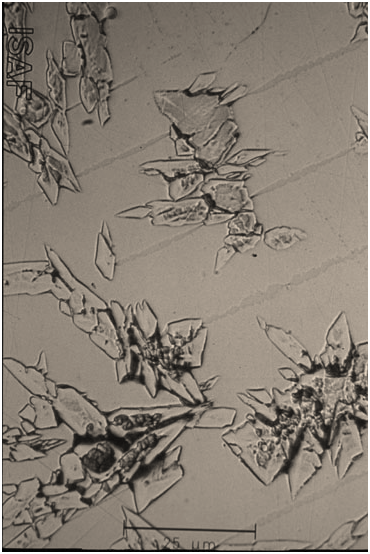Sigma phase
If a body-centered cubic (bcc) and a face-centered cubic metal come into contact, whereas the atomic radii are almost similar with only small deviations (fig. 1).
It mainly forms from delta ferrite as its potential composition (24 % Cr, 18 % Mo, 6 % Ni, 52 % Fe) is similar to the composition of delta ferrite in high-alloy CrNi steel. Alloy components like molybdenum, titanium and silicon favor the formation of the Sigma phase, nitrogen and carbon reduce it.
This undesired phase is diffused in high-alloy steels at temperatures between 600 and 900 °C. As this phase draws chromium from the metal matrix (basic structural mass) and has an embrittling effect, it is undesired. Particularly for steels, this leads to a drastic deterioration of the corrosion resistance.
Over 900°C, the Sigma phase is solved again. This means, it can be corrected by proper heat treatment.
Additional references:
Chi phase


